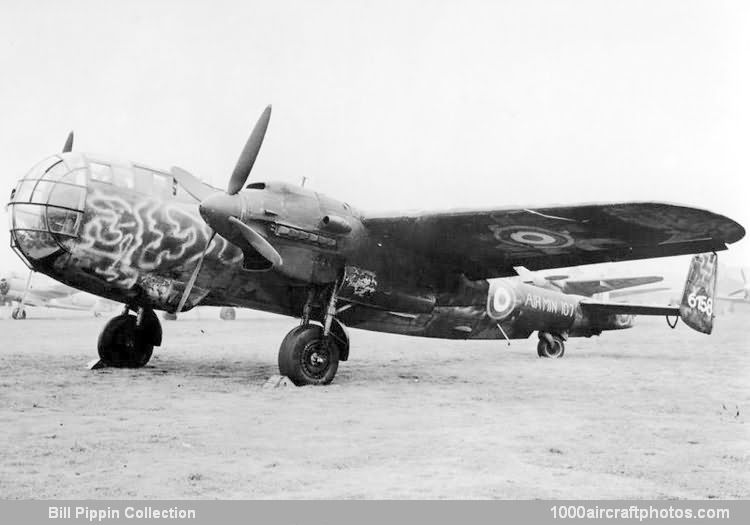08/31/2014. Remarks by Johan Visschedijk: "Remarks on the Do 217 M-1 written by Captain Eric "Winkle" Brown, who from 1944 on flew many captured German types as the Royal Navy's Chief Test Pilot at the famous Royal Aircraft Establishment (RAE) at Farnborough, UK.
"The process of prostituting purity of line for operational efficiency really began with the Do 17 Z, the new forward fuselage of which had been created solely to afford the lower aft-firing gun a better field of fire and owed nothing to aerodynamic aestheticism. Nevertheless, something of the beauty of contour first displayed by that original Do 17 could still be perceived in what may be considered to have been its ultimate descendant, the Do 217.
The girlish slenderness of line had translated over the intervening years to that of matronly corpulence; indeed, the deepening of the fuselage introduced with the E-series of this aeroplane was suggestive of a fairly advanced stage in pregnancy. It still looked good, however, with an aura of stolid efficiency not dissimilar to that which emanated from the Junkers Ju 88, and it was with some relish that I first clambered through the hinged crew entry trap in the underside of Do 217 M-1 c/n 56158 at Schleswig, Germany on August 24, 1945.
I had actually flown its predecessor, the Do 17 Z, the day before at Husum, Germany and had found it pleasant enough but somewhat underpowered with its BMW-Bramo 323P Fafnir nine-cylinder radials each giving out 1,000 hp for take off and 940 hp at 13,125 ft (4,000 m) and attached to a gross weight of 18,931 lb (8,587 kg), which, in max overload condition, could rise to 19,481 lb (8,836 kg). It did not need a mathematician to assess that the Do 217 M-1, with its two Daimler-Benz DB 603As each rated at 1,750 hp for take off and 1,850 hp at 6,890 ft (2,100 m) pulling an aeroplane weighing up to 36,817 lb (16,700 kg), offered little improvement in power-to-weight ratio. The Daimler-Benz engines had, of course, only been applied to the Do 217 to safeguard against production delays that could have arisen had shortages of BMW 801D fourteen-cylinder radials occurred, but even with the intended power plant, the parallel production Do 217 K-1 offered no better power-to-weight ratio.
We knew a fair amount about the Do 217 M-1 as, on the night of February 23-24, 1944, an example of this type (c/n 56051) of 2.Staffel of Kampfgeschwader 2 (KG 2) that had received minor damage from anti-aircraft fire over the north-west suburbs of London - its crew promptly baling out at 10,000 ft (3,050 m) - had flown on to make an excellent pilotless belly landing in Cambridge, although this aircraft had not been restored to flying condition. The origin of the aircraft that I found at Schleswig was obscure - all indication of the unit by which it had been operated had been painted out and the aircraft had presumably been brought in to the collection field by one of our ferry people - but it is likely that it had originally been included on the strength of
KG 2.
The Do 217 M-1 was certainly well armed, with a 0.311 in (7.9 mm) MG 131 machine gun in the extreme nose with a thousand rounds, a 0.511 in (13 mm) MG 131 with 500 rounds in an electrically-operated dorsal turret, another MG 131 with a thousand rounds in the ventral step and a pair of 0.311 in (7.9 mm) MG 81s with 750 rounds per gun in lateral positions. The German penchant for grouping the entire crew together in the forward fuselage had been adhered to, with the pilot and observer/bomb-aimer up front, the radio operator behind the pilot and the gunner behind him. Immediately aft of the crew compartment was the fairly capacious bomb cell with stowage space for up to 5,550 lb (2,520 kg) of bombs.
After flying the Do 217 M-1 at Schleswig on both August the 24th and 25th, I renewed my acquaintance with the same aeroplane almost two months later at Farnborough, whither it had meanwhile been ferried, having acquired along the way the Air Ministry number 107. It was at the RAE that, on October 18, I undertook full handling trials with the Dornier and, on December 29, finally delivering it to Brize Norton and an indeterminate fate, with the thought that if the Do 217 M was - as I had anticipated on first sight - one of those underpowered twins that abounded in the early 'forties time scale, it had certainly been less lethal than some of them and at least pleasant to fly when everything was working!"
